The Zoo
Julia Kwan
2018
| 11 min 51 sec
Selections and Awards
Acclaimed Vancouver filmmaker Julia Kwan’s first animated film is a poignant visual poem that explores themes of abandonment, home, and change, while touching on some of the debates swirling around two seemingly disparate subjects: the decline of ethnic neighbourhoods and urban zoos.
Inspired by a real bear that once lived in Vancouver’s Stanley Park, The Zoo follows the parallel and intersecting lives of Kut, a polar bear cub, and Jun, a Chinese boy who first visits Kut during the zoo’s glory days and returns numerous times over the decades to observe the majestic captive pacing his cement jail. Eventually, they both enter their twilight years; the elderly Jun lives in a cramped room in Chinatown, while Kut ekes out his final days in a zoo that’s closing.
Charming yet bittersweet, Julia Kwan’s use of cutout animation makes a statement about ethnic neighbourhoods, gentrification, and abandonment of the elderly. The Zoo leaves its viewers with a lingering and profound sense of hope that home can be found within.
Kwan, who made her feature film debut with Eve and the Fire Horse, won the coveted Special Jury Prize for World Cinema at Sundance. In her 2014 NFB feature doc, Everything Will Be, she explored the ongoing gentrification of Vancouver’s Chinatown.
The Zoo is produced by Fire Horse Productions Ltd. (Julia Kwan, Ruth Vincent) in co-production with the National Film Board of Canada, BC & Yukon Studio (Shirley Vercruysse, producer; Michael Fukushima, executive producer).
Inspired by a real bear that once lived in Vancouver’s Stanley Park, The Zoo tells the story of a polar bear and a Chinese boy who visits him until they’re both in their twilight years. Acclaimed filmmaker Julia Kwan adeptly makes a poignant statement about gentrification, abandonment of the elderly and leaves us with the notion that perhaps home can be found within.
One-liner
Inspired by a real bear that once lived in Vancouver’s Stanley Park, The Zoo follows the parallel lives of a polar bear cub and a Chinese boy who visits him until they’re both in their twilight years.
Q & A WITH THE ZOO FILMMAKER JULIA KWAN
Filmmaker Julia Kwan drew her inspiration for The Zoo from Everything Will Be, her 2014 documentary about Vancouver’s Chinatown. “[Making the documentary] made me nostalgic about my childhood, and I’d think about the Stanley Park Zoo, and how important it was for my immigrant, working-class family,” says Kwan. Her family’s visits to the popular attraction were the closest they would get to animals and the natural world. “Say what you will about zoos, but as a child, it was enriching for me to be that close to animals and feel a connection,” she says.
Kwan’s zoo visits would come to an end in the 1990s, when protests about animals in captivity led to the zoo’s closure—and it was only once her fascination with the zoo had been renewed that she learned more about Tuk, the polar bear who was too old to be moved with the rest of the animals and lived out his days in the concrete habitat.
“As a kid, I never thought about the polar bear habitat, but I look back and think, ‘This circle of cement is the cruelest thing you can put a bear into,’” says Kwan. “These days, there are beautiful habitats for bears, and they actually do things like hide food so that there’s play and they’re engaged emotionally, mentally, and physically. That wasn’t going on back then. Bears develop OCD when they’re caged that long. They continually pace, and they develop tics.”
“I really wanted to see this film through the sunken perspective of Kut [one of two main characters in The Zoo] standing in front of an insurmountable wall because Kut had his one patch of sky, one pool, one tree, etc.”
Kwan was compelled to integrate a human character into The Zoo—Jun, the Chinese boy turned elderly gentleman—when she noted parallels between the bear’s journey and the themes that she’d explored in her Chinatown documentary.
“In the early days of development, when I was thinking about the themes of The Zoo—loss, abandonment, trauma—I realized that a lot of this is what I was talking about in my last film [Everything Will Be] as well,’” recalls Kwan. “Chinatown was a forced ghetto, and almost like a prison in the beginning. I wanted to make a statement about ethnic enclaves, the gentrification of these communities, and the abandonment of the elderly.”
Kwan chose cutout animation to tell her story because of its reliance on real-life elements. “I had dabbled in animation before, but not cutout animation,” she says. “Someone introduced me to the work of Yuri Norstein, and I was blown away by its imagery and emotional depth. Using the cutout animation and incorporating elements and textures from real life, that was exciting to me.”
If there’s a single emotion that Kwan would like The Zoo’s audiences to feel as the end credits roll, it’s hope. “Every time I watch the film, when the bear gets up on his hind legs and then the drum starts, I always smile,” says Kwan. “It takes me into his world. The bear’s okay! I feel that. And at the end, when the bear is looking up at the stars, what you actually see is the constellation of the Big Dipper, which is also known as the Big Bear. I like to imagine that’s his mama. He’s looking up at the stars at his mom.”
Fast facts about the elderly in Canada
- According to Statistics Canada 2016 Census projections, nearly one in four Canadians will be over the age of 65 by the year 2031.
- For the first time ever, seniors made up a bigger share of Canada’s population than children. But the margin is close: in 2016, children aged 14 and under made up 16.6 percent of the total population, while seniors made up 16.9 percent.
Source: https://www.macleans.ca/news/canada/what-the-census-tells-us-about-canadas-aging-population/
Images
Loading...
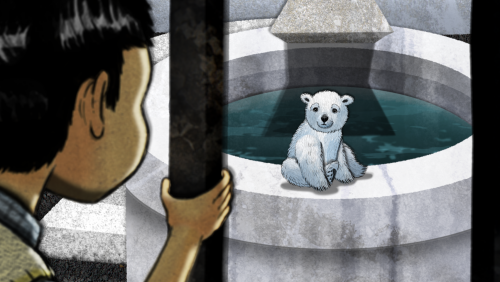
Download
Loading...
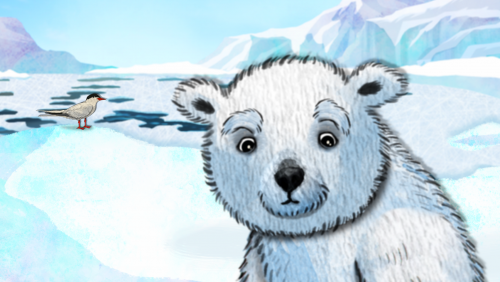
Download
Loading...
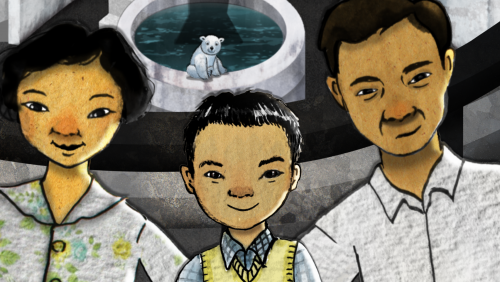
Download
Loading...
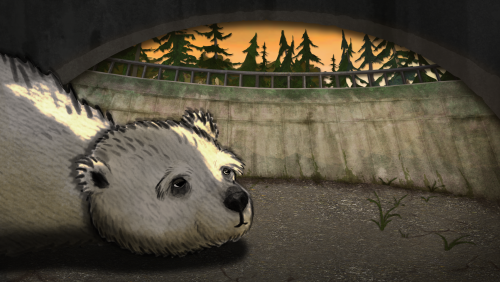
Download
Loading...
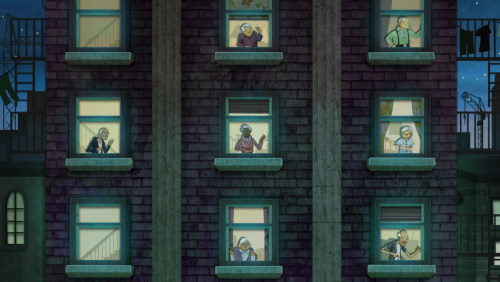
Download
Loading...
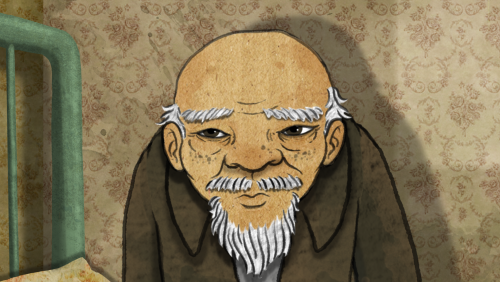
Download
Loading...
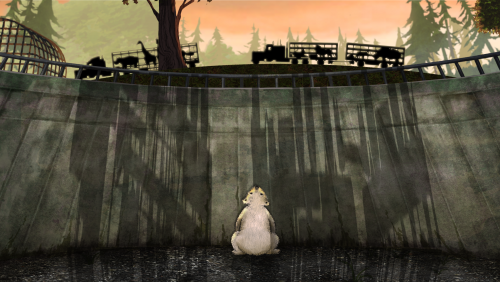
Download
Loading...
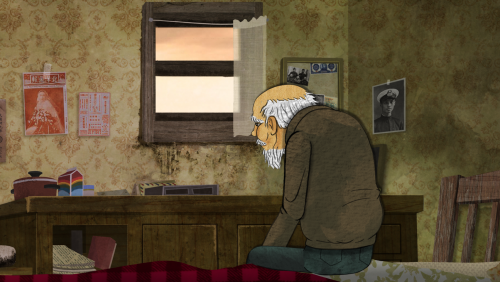
Download
Loading...
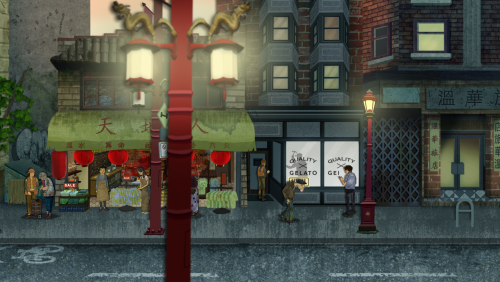
Download
Trailer
Clips
Team
Julia Kwan
Director
Photo
Photo : Tallulah Tallulah
Shirley Vercruysse
Producer, Executive Producer
Photo
Photo : Myriam Frenette
Ruth Vincent
Executive Producer
Photo
Photo : Ruth Vincent
Credits
Written and Directed by
Julia Kwan
Producers
Ruth Vincent
Shirley Vercruysse
Julia Kwan
Animation Director
Jesse Cote
Art Director
Bonni Reid
Music
Rob Teehan
Sound Designer
Greg Stewart
Character Designer
Kaho Yoshida
Additional Character Designs
Elisa Chee
Aparna Kapur
Animation Production Services
Jesters Animation
Storyboards Jesse Cote
Story Art Tzanko Tchangov
Editor for Jesters Animation Jesse Cote
Character Design
Jesse Cote
Pedro Amato
Pascal Zaffiro
Carlos Rossell
Austin Legg
Chris Muzyka
Background Layout
Jesse Cote
Chris Musyka
Background Colour Design
Bonni Reid
Jesse Cote
Pedro Amato
Austin Legg
Animators
Jesse Cote
Brad Gibson
Carlos Rossell
Ian Vincent Godfrey
Special Effects
BLATANT
Additional Storyboarding
H.P. Mendoza
Editor Consultant
Michael Brockington
On-Line Post Production
CINEMATIK
Audio Post-Production Services
Post Modern Sound
Linda McAteer
Foley Recordist
Rick Senechal
Foley Artist
Don Harrison
Financial Services
Gemma Davis
Insurance Services
Front Row Insurance
Legal Services
Eva Schmieg
Miller Thomson
SONGS
“Polar Family”
“Zoocaphony”
“Relics in the City”
“Chinese Radio”
“Fireworks”
“So It Goes”
Written by Rob Teehan
Performed by Rob Teehan
Used Courtesy of the Artist
National Film Board of Canada
Associate Producer
Teri Snelgrove
Production Supervisor
Jennifer Roworth
Technical Coordinator
Wes Machnikowski
Studio Administrator
Carla Jones
Production Coordinator
Kristyn Stilling
Executive Producers
Shirley Vercruysse
Michael Fukushima
Produced with the support of TELUS
Executive Producer
Blair Miller
Executive Producer
Kim Hsu Guise
Executive Producer
Jonas Woost
Producer
Smita Acharyya
Publicity
Lizzy Karp
Developed with the participation of
CREATIVE BC
Canadian Film or Video Production Tax Credit
With the participation of
the Province of British Columbia
Film Incentive BC
Funded by the Government of Canada

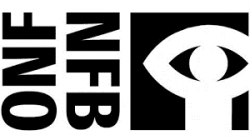
Media Relations
-
About the NFB
The National Film Board of Canada (NFB) is a leader in exploring animation as an artform, a storytelling medium and innovative content for emerging platforms. It produces trailblazing animated works both in its Montreal studios and across the country, and it works with many of the world’s leading creators on international co-productions. NFB productions have won more than 7,000 awards, including seven Oscars for NFB animation and seven grand prizes at the Annecy festival. To access this unique content, visit NFB.ca.
Media Relations
-
About the NFB
The National Film Board of Canada (NFB) is a leader in exploring animation as an artform, a storytelling medium and innovative content for emerging platforms. It produces trailblazing animated works both in its Montreal studios and across the country, and it works with many of the world’s leading creators on international co-productions. NFB productions have won more than 7,000 awards, including seven Oscars for NFB animation and seven grand prizes at the Annecy festival. To access this unique content, visit NFB.ca.